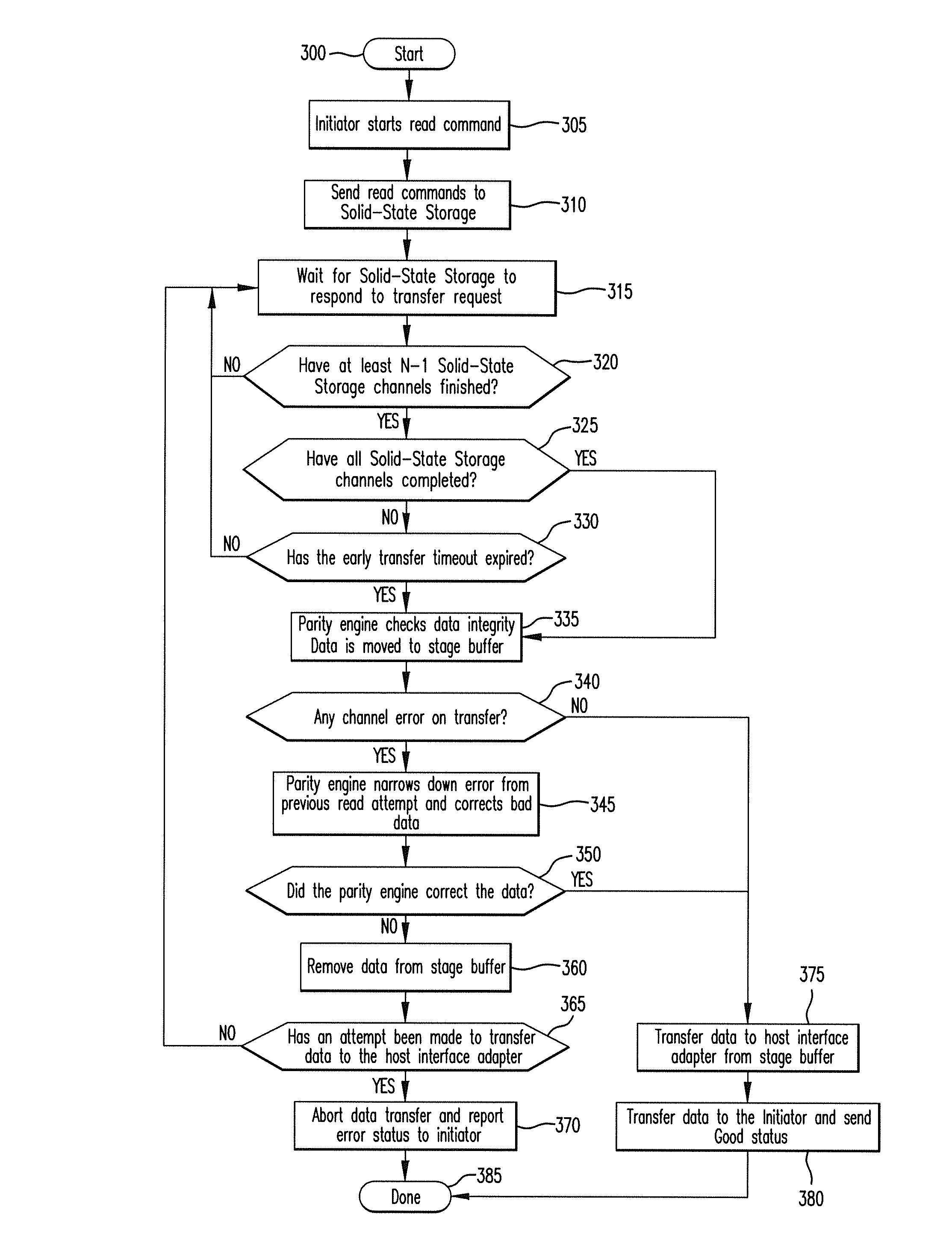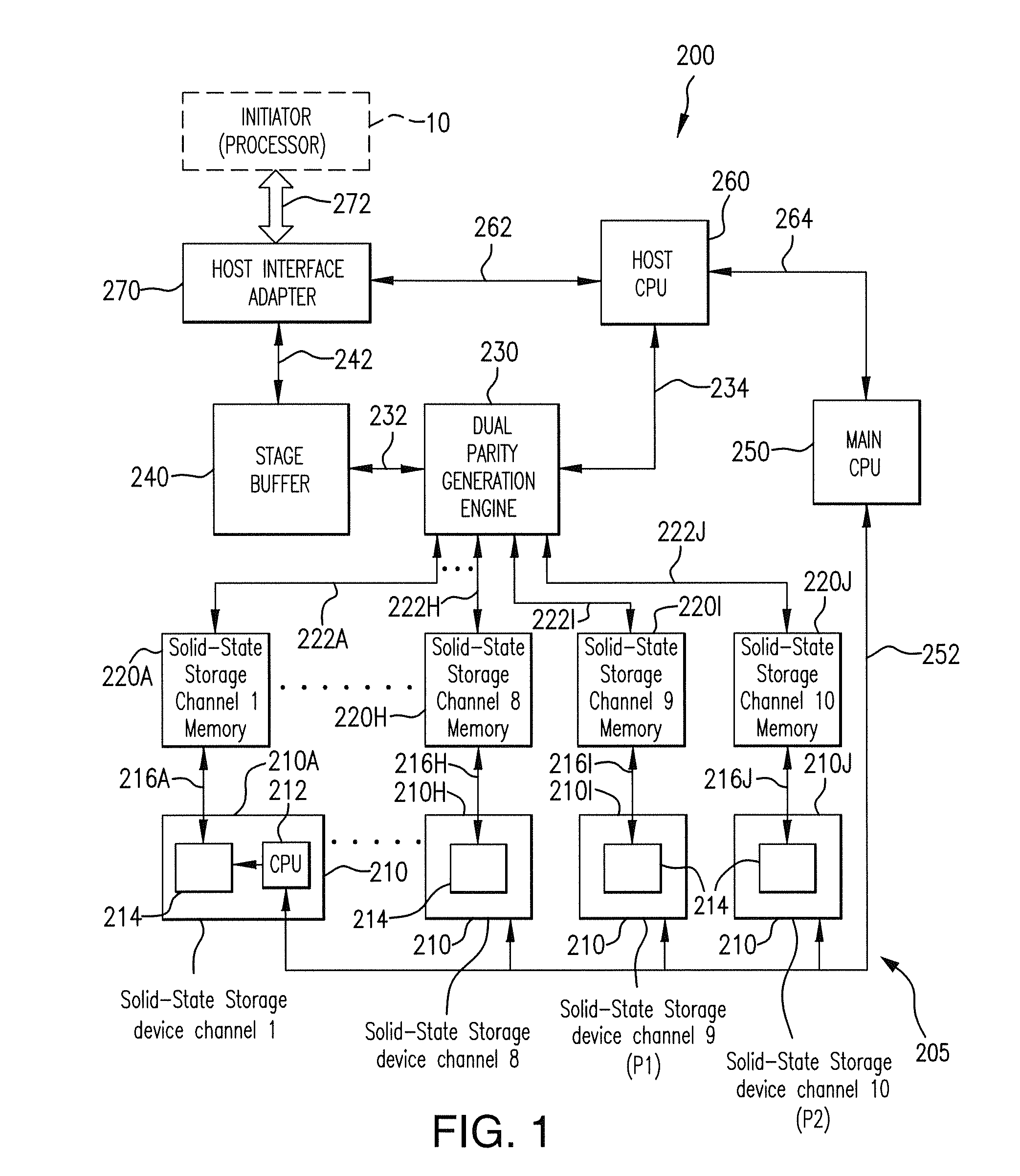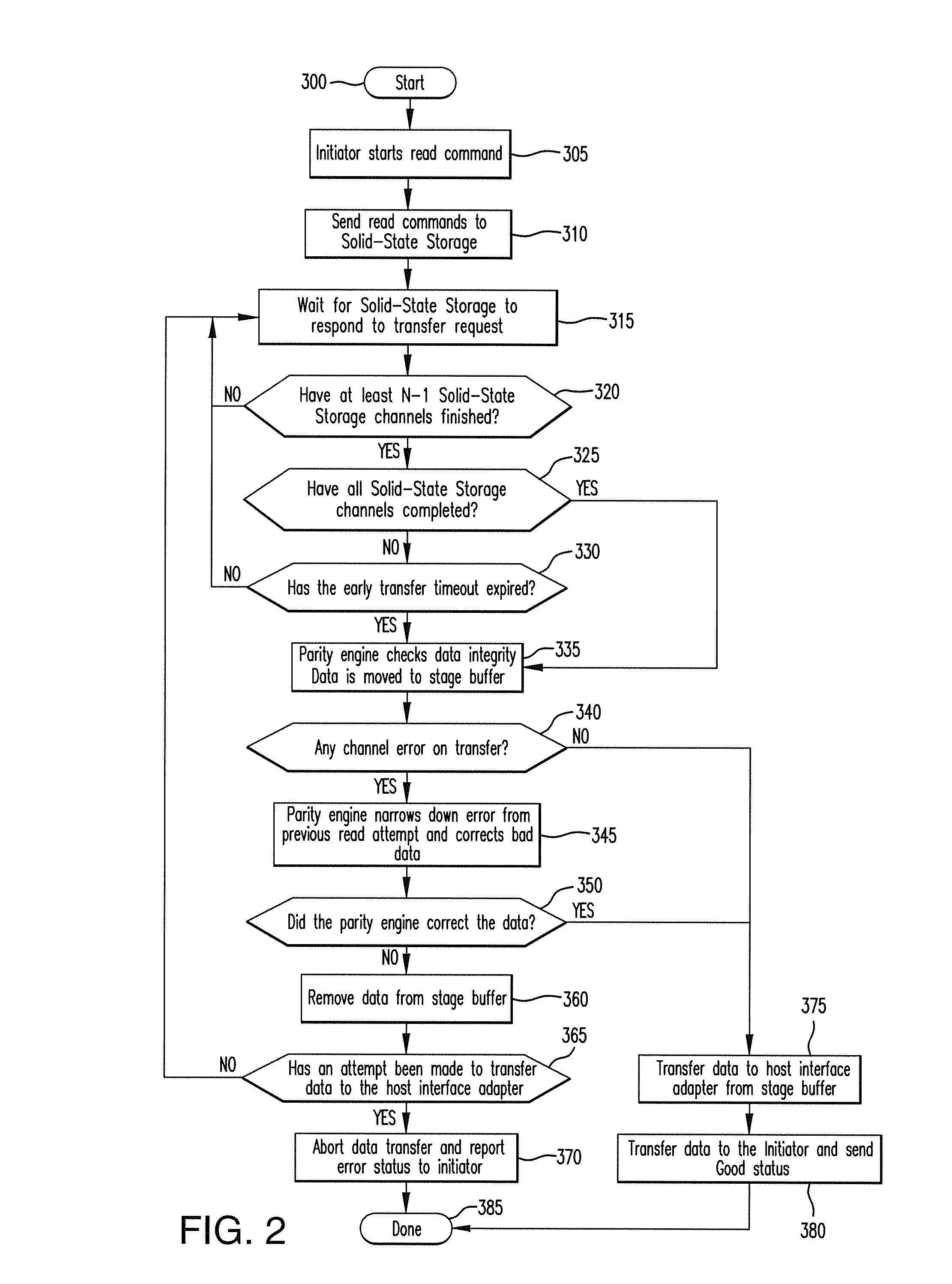Method for reducing latency in a solid-state memory system while maintaining data integrity
a solid-state memory and data integrity technology, applied in the field of reducing latency in solid-state memory systems while maintaining data integrity, can solve the problems of nand flash being faster and more reliable than nand flash, prone to degradation of flash memory, and shortening its lifespan, so as to achieve high fault tolerance, low energy consumption, and fast access
- Summary
- Abstract
- Description
- Claims
- Application Information
AI Technical Summary
Benefits of technology
Problems solved by technology
Method used
Image
Examples
Embodiment Construction
[0055]Referring now to FIG. 1, there is shown memory system 200 for storing and retrieving data for use by one or more processors 10. As will be seen in following paragraphs, memory system 200 provides for access of data with reduced latency while still providing valid data to a requesting processor 10, hereinafter referred to also as an initiator.
[0056]Although not restricted to any particular array of data storage devices, the method of reducing latency while maintaining the integrity of the data stored in memory system 200 is illustrated herein in conjunction with a memory system using a storage array 205 which may be based on a plurality of solid-state storage devices such as, for example, flash memory, or phase-charge memory, as well as memristor memory, or carbon nanotubes memory. The memory system also is contemplated, as an example, as a system having at least two storage devices fault tolerance.
[0057]To have the capability to reduce latency in memory system 200 and maintain...
PUM
 Login to View More
Login to View More Abstract
Description
Claims
Application Information
 Login to View More
Login to View More - R&D
- Intellectual Property
- Life Sciences
- Materials
- Tech Scout
- Unparalleled Data Quality
- Higher Quality Content
- 60% Fewer Hallucinations
Browse by: Latest US Patents, China's latest patents, Technical Efficacy Thesaurus, Application Domain, Technology Topic, Popular Technical Reports.
© 2025 PatSnap. All rights reserved.Legal|Privacy policy|Modern Slavery Act Transparency Statement|Sitemap|About US| Contact US: help@patsnap.com



